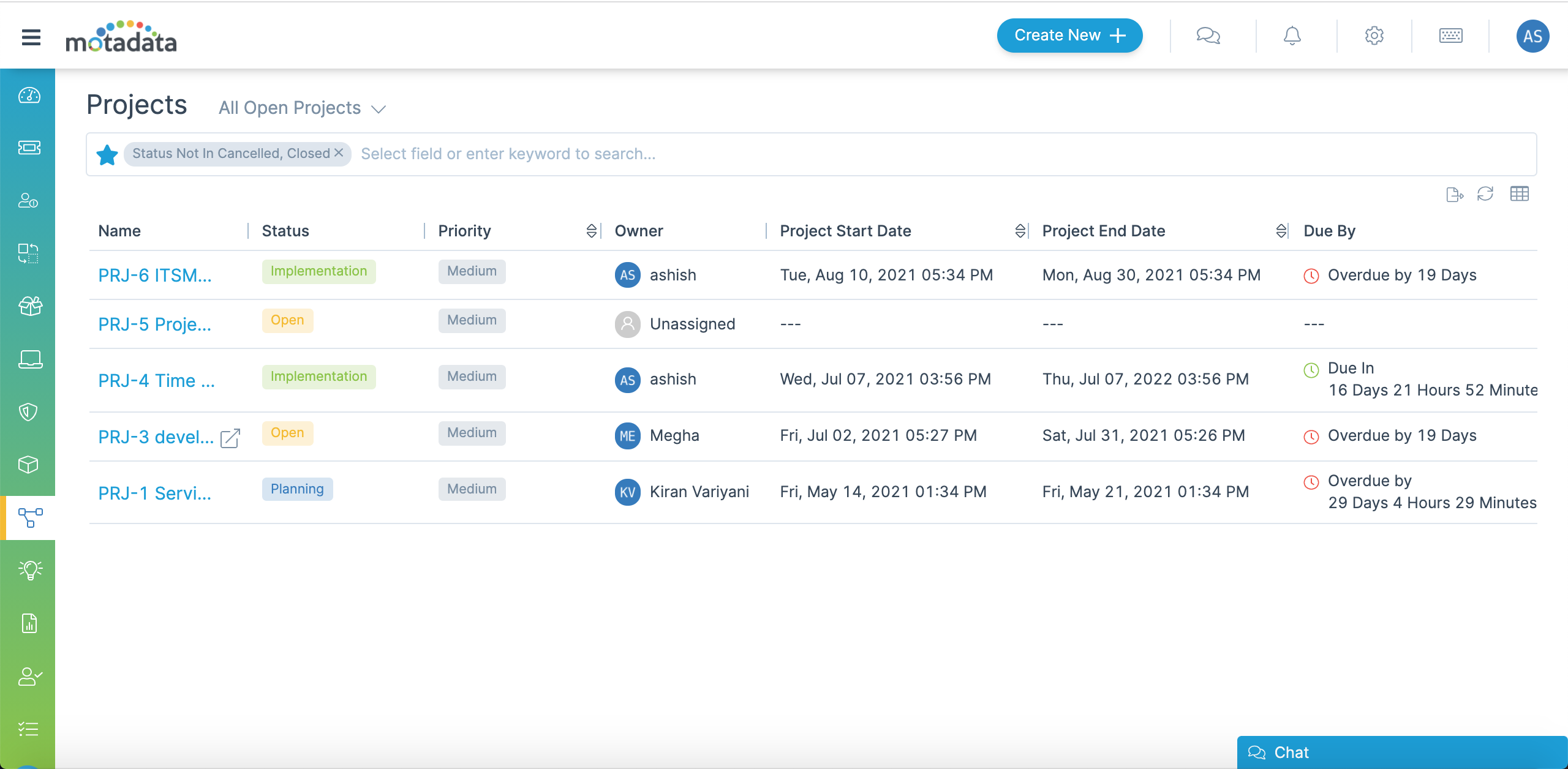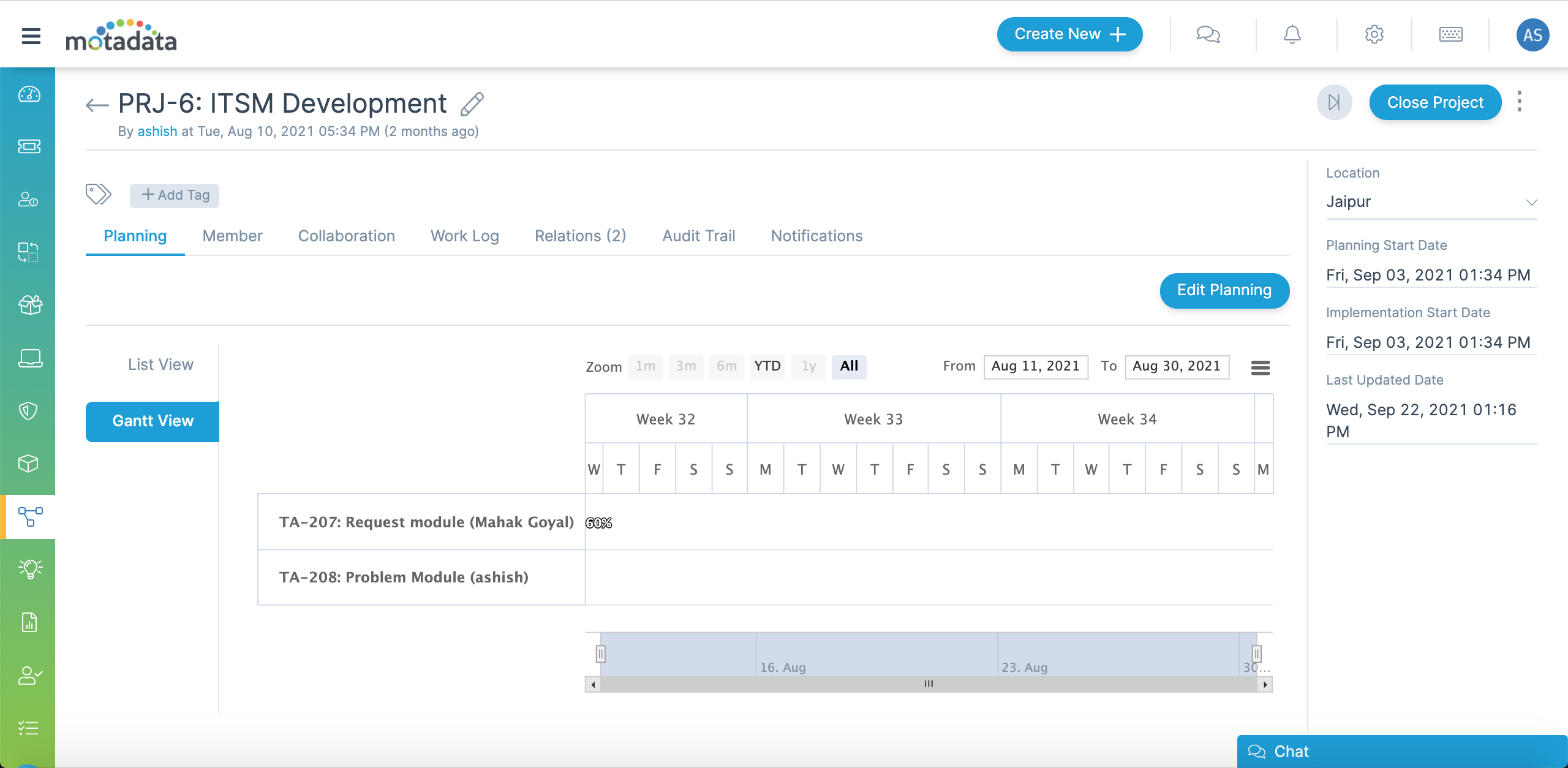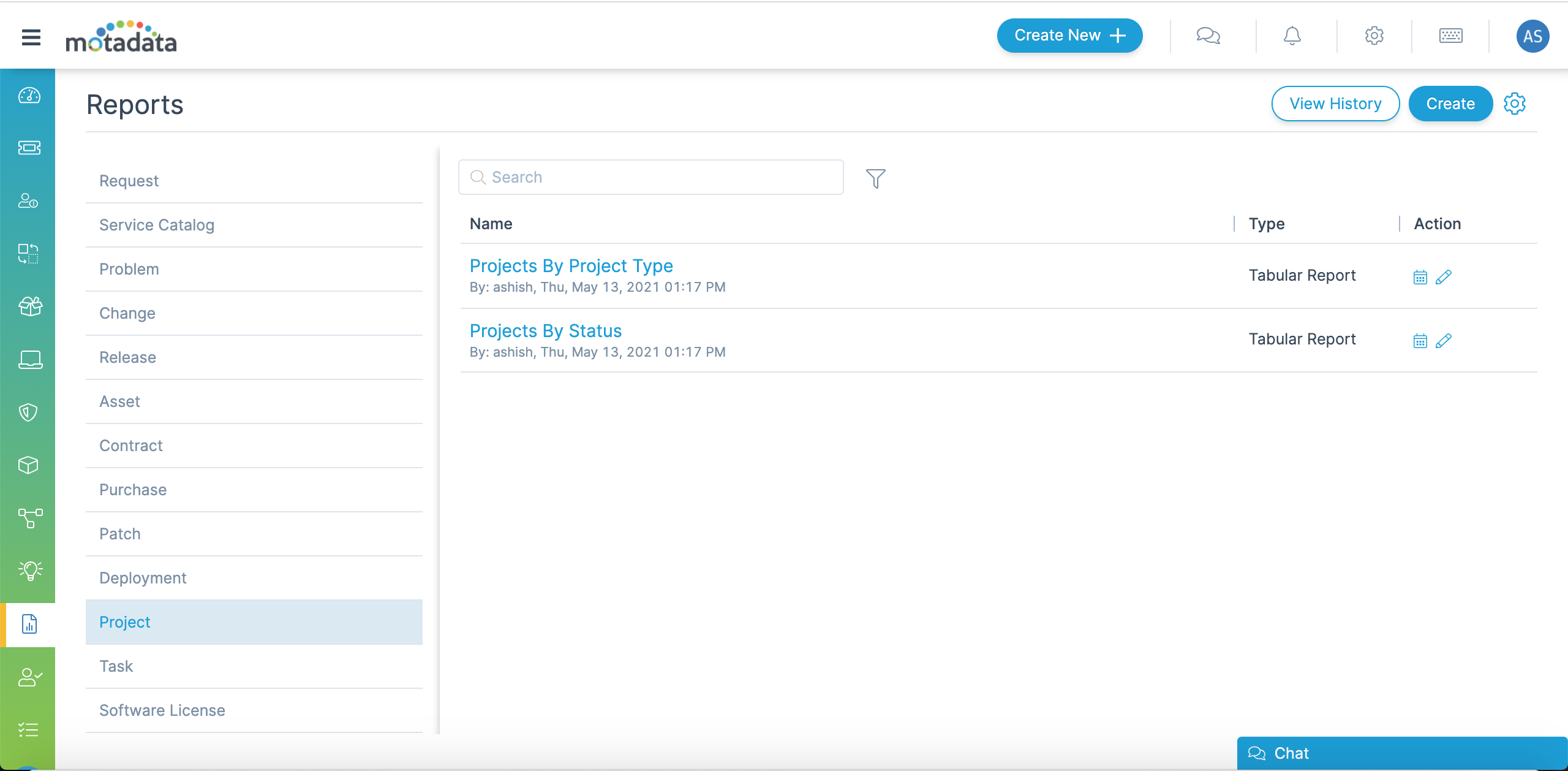Deliver Results with IT Project Management Tool
Motadata ServiceOps ITSM Platform’s Project Management can help you Manage your Projects Efficiently, Enabling you to Resolve Issues More Quickly.

Easily Organize, Schedule, and Manage IT Projects
Plan and manage complete development life cycles of multiple IT projects from your ITSM platform to ensure consistency and reliability.
- Project planning interface to define milestones and tasks
- Team onboarding
Key Benefits
- Control Costs
- Mitigate Failure Risks

Seamlessly Execute All the Projects
Efficiently monitor the overall progress of projects and track individual tasks to stay on schedule and control costs for better project execution.
- Gantt chart support
- Task management to monitor task progress and identify task dependencies
Key Benefits
- Improve Efficiency
- Better Collaboration

Gain Actionable Insights with Project Analytics
Get real-time visibility into the project status, project owner, percentage completion, and the due date for project deployments across teams.
- Cross-project view
- Project reports and dashboards
Key Benefits
- Better Visibility
- Improve Customer Satisfaction
Other Features
Enable Teams to Collaborate, Organize and Prioritize Projects, and Get More Done with our Project Management System.
Ebook
IT Service Desk, A Complete Guide
A Guide to Supercharge your IT Service Delivery.
Other ServiceOps Modules
Explore ServiceOps
IT Service Management Solution that is Easy to Use, Simple to Set Up, and has Everything you Need to Provide a Seamless IT Service Delivery Experience.
Try ServiceOps for 30 Days
Download our software free of cost for 30 days
Schedule Demo With Our Expert
Book a slot in our calendar and experience ServiceOps live.
Do You Have Any Questions? Please Ask, We Are Ready To Support
If your question is not listed here, please feel free to reach out.
While there are many projects management types, the six most common ones are – Waterfall, Agile, Scrum, Kanban, Lean, and Six Sigma.
Waterfall project management is one of the oldest and slowest approaches which involves working in waves where each stage is strongly dependent on the one before it. So, if bugs are discovered during a later phase in the process, prior steps must be revised.
Agile is a more flexible and speedier alternative to the waterfall methodology and involves working in smaller pieces, or sprints, enabling projects to pivot as required.
Scrum is a faster version of agile that focuses on utilizing sprints to complete projects in tiny chunks, generally on a one-month timeline.
Kanban is another variation of agile that focuses on the number of tasks involved in each process and how they may be simplified, decreased, etc.
Lean management is like Kanban in terms of the focus on processes, but it places a greater emphasis on how processes may be eliminated to provide the best, economical, and timely experience for customers.
The Six Sigma technique emphasizes enhancing the quality of a project’s output with a focus on customer satisfaction.
A project manager oversees a project’s planning, procurement, execution, and completion.
The project manager begins with establishing the project’s scope and coordinating with stakeholders to set expectations. Next, he defines the project plan based on the agreed-upon scope and deliverables, which will include the project budget, resource needs, and timeframe.
The next stages involve doing risk assessments, tracking timeframes and resources to identify possible bottlenecks before they become issues, responding to changes quickly as and when they occur, and finally producing the expected deliverables, on schedule, and within budget.
After the project is completed, the project manager creates and analyzes project reports to compare them to past projects, acknowledges areas where the team excelled, highlights areas where there is still an opportunity for growth, and makes data-driven choices.
The focus of ITSM, like project management, is achieving user satisfaction through incident resolution and closure, service request fulfillment, change implementation, and so on within the described scope, timeline, cost, and quality factors. Thus, project management can become an important part of IT Service Management.
Organizational change management is critical to any progress. Because ITSM aims to deliver high-quality IT services at the lowest feasible cost, change must be managed with utmost caution to avoid jeopardizing the stability and operation of the IT system. This is where project management would be helpful to keep needless expenditures in line while also staying ahead of customers’ changing business requirements.
